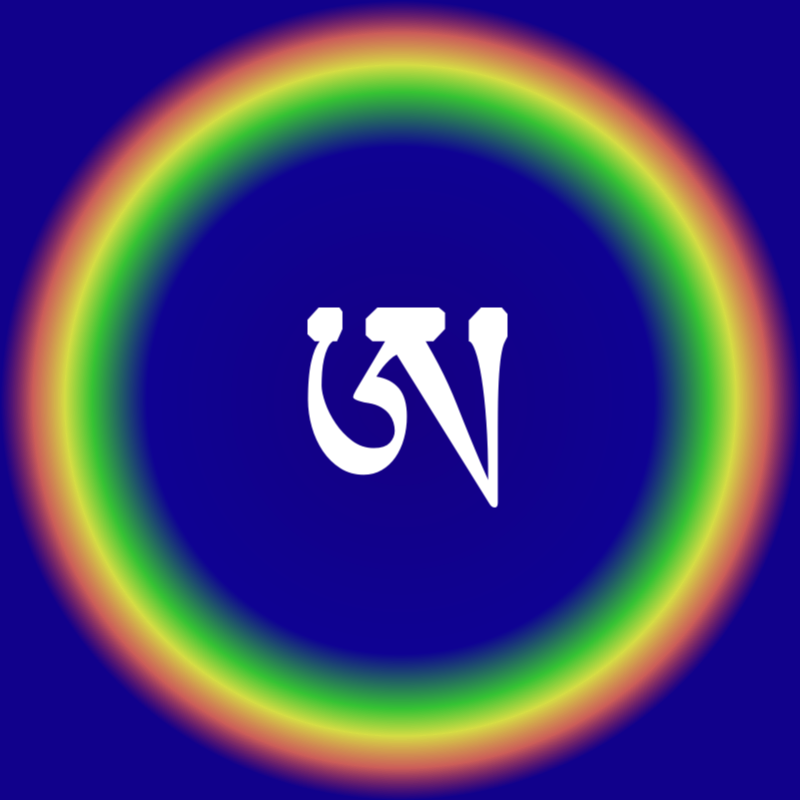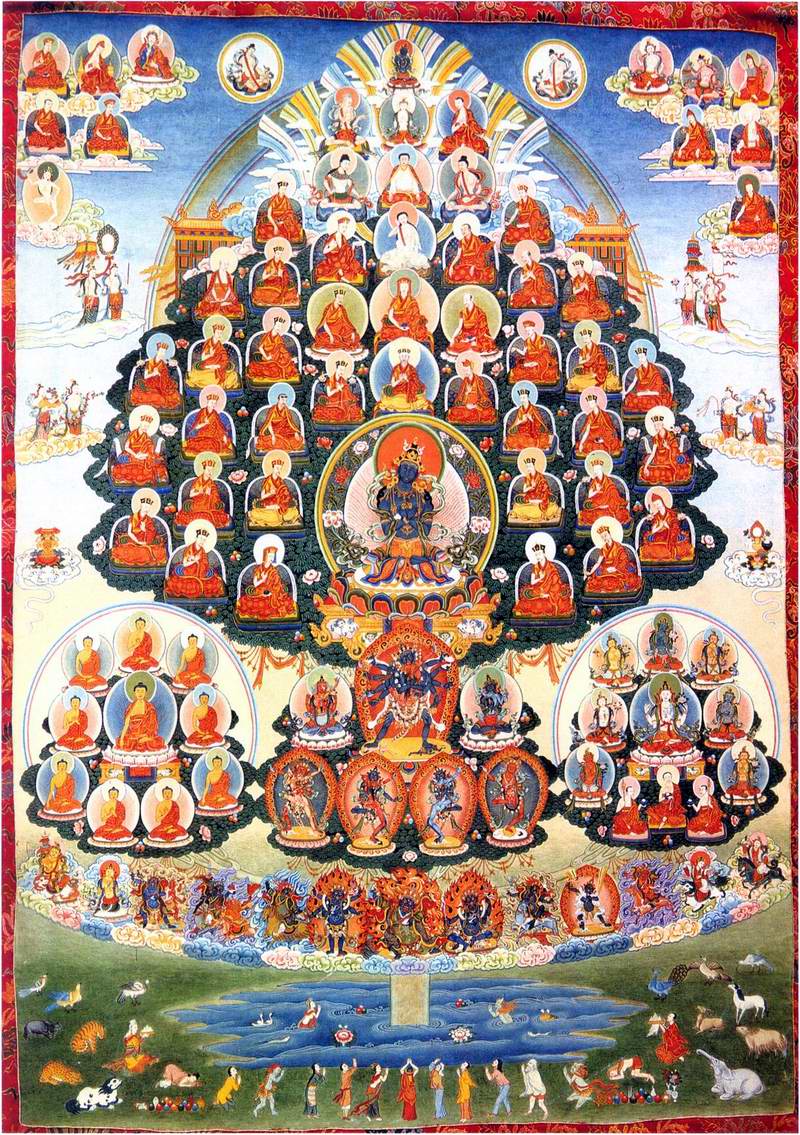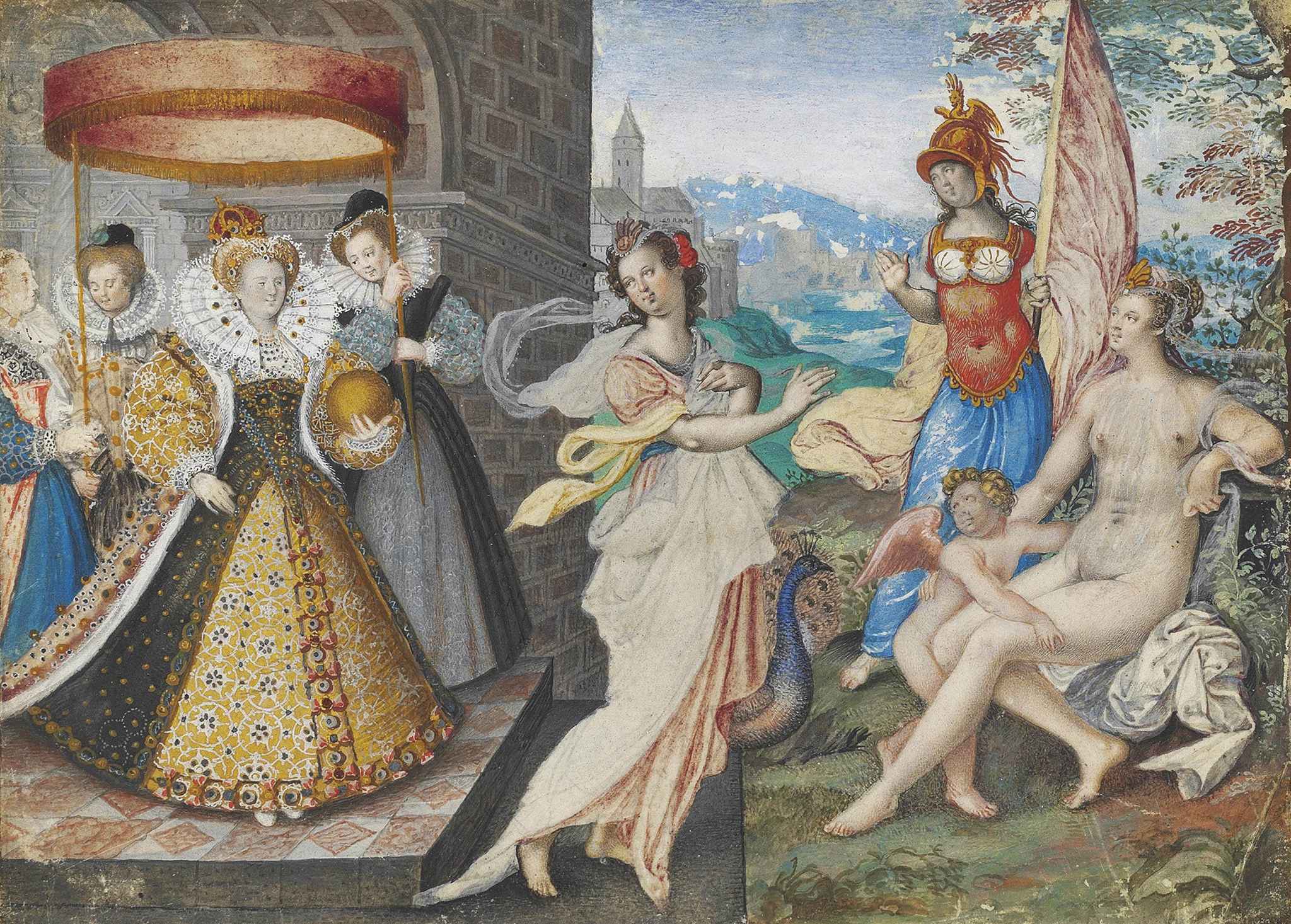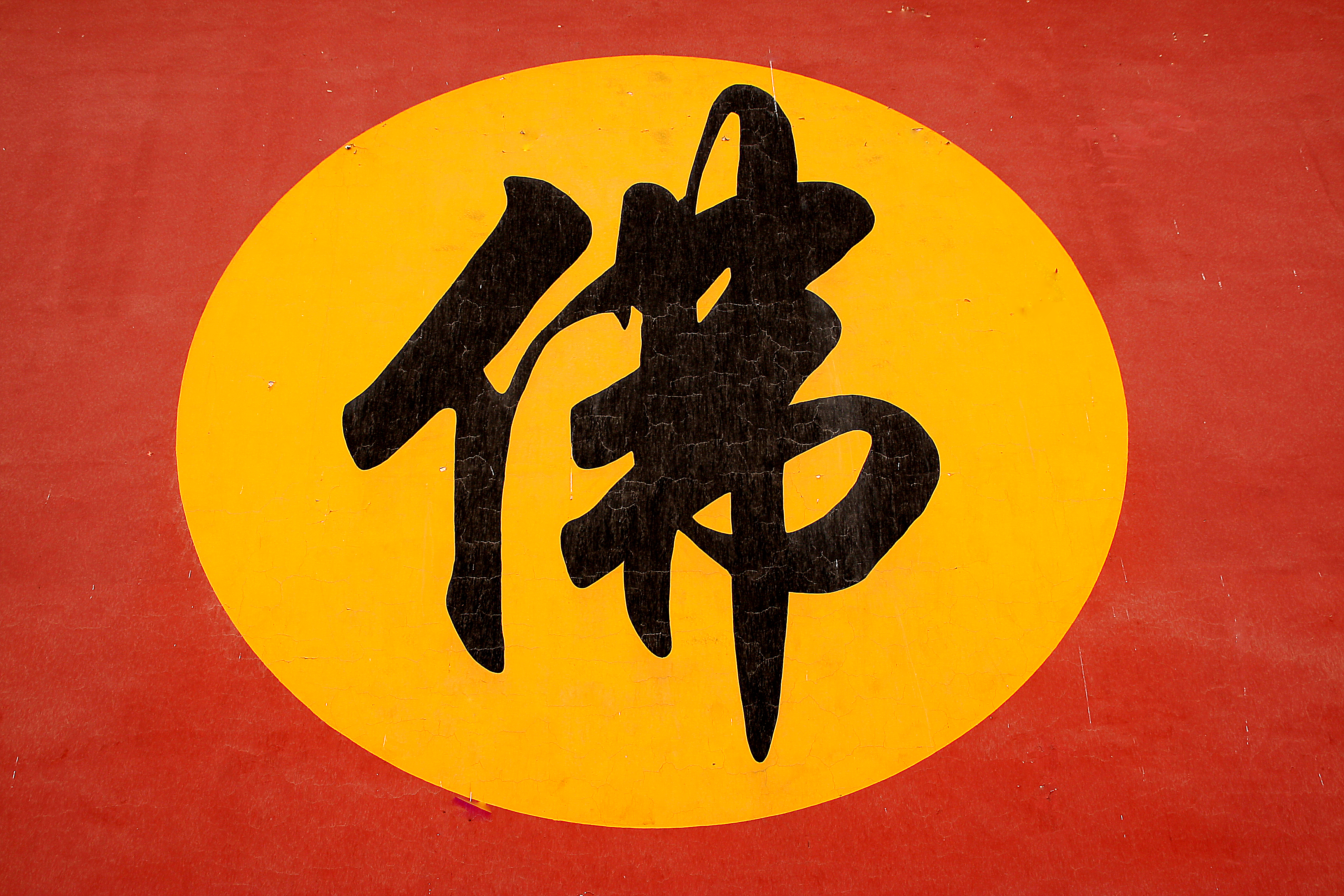|
Saṃbhogakāya
''Saṃbhogakāya'' (, zh, t=報身, p=bàoshēn, Tib: ''longs spyod rdzog pa'i sku'') is the second of three aspects of a buddha. ''Sambhogakāya'' is a "subtle body of limitless form". Buddhas such as Bhaisajyaguru and Amitābha, as well as advanced bodhisattvas such as Avalokiteśvara and Manjusri can appear in an "enjoyment-body." A Buddha can appear in an "enjoyment-body" to teach bodhisattvas through visionary experiences. Those Buddhas and Bodhisattvas manifest themselves in their specific pure lands. These worlds are created for the benefits of others. In those lands it is easy to hear and practice the Dharma. A person can be reborn in such a pure land by "the transfer of some of the huge stock of 'merit' of a Land's presiding Buddha, stimulated by devout prayer." One of the places where the ''Sambhogakāya'' appears is the extra-cosmic realm or pure land called Akaniṣṭha. This realm should not be confused with the akanistha of the pure abodes, for it is a realm ... [...More Info...] [...Related Items...] OR: [Wikipedia] [Google] [Baidu] |
Trikaya
The Trikāya (, lit. "three bodies"; , ) is a fundamental Buddhist doctrine that explains the multidimensional nature of Buddhahood. As such, the Trikāya is the basic theory of Mahayana Buddhist theology of Buddhahood. This concept posits that a Buddha has three distinct ''kayas'' or "bodies", aspects, or ways of being, each representing a different facet or embodiment of Buddhahood and ultimate reality. The three are the '' Dharmakāya'' (Sanskrit; Dharma body, the ultimate reality, the Buddha nature of all things), the ''Sambhogakāya'' (the body of self-enjoyment, a blissful divine body with infinite forms and powers) and the '' Nirmāṇakāya'' (manifestation body, the body which appears in the everyday world and presents the semblance of a human body). It is widely accepted in Buddhism that these three bodies are not separate realities, but functions, modes or "fluctuations" (Sanskrit: vṛṭṭis) of a single state of Buddhahood. The Trikāya doctrine explains how a Bu ... [...More Info...] [...Related Items...] OR: [Wikipedia] [Google] [Baidu] |
Amitābha
Amitābha (, "Measureless" or "Limitless" Light), also known as Amituofo in Chinese language, Chinese, Amida in Japanese language, Japanese and Öpakmé in Tibetan script, Tibetan, is one of the main Buddhahood, Buddhas of Mahayana, Mahayana Buddhism and the most widely venerated Buddhist deities, Buddhist figure in East Asian Buddhism.阿彌陀 Amitâbha Digital Dictionary of Buddhism Amitābha is also known by the name Amitāyus ("Measureless Life"). Amitābha is the main figure in two influential Indian Buddhist Mahayana sutras, Mahayana Scriptures: the ''The Amitāyus Sutra, Sutra of Measureless Life'' and the ''Amitābha Sūtra''. According to the ''Sutra of Measureless Life'', Amitābha established a Pure Land, pure land of perfect peace and happiness, called Sukhavati, Sukh ... [...More Info...] [...Related Items...] OR: [Wikipedia] [Google] [Baidu] |
Rainbow Body
In Dzogchen, rainbow body (, Jalü or Jalus) is a level of realization. This may or may not be accompanied by the 'rainbow body phenomenon'. The rainbow body phenomenon is pre-Buddhist in origin and is related to the indigenous Tibetan Bon religion, and is a topic which has been treated fairly seriously in Tibet for centuries past and into the modern era. Other Vajrayana ''Vajrayāna'' (; 'vajra vehicle'), also known as Mantrayāna ('mantra vehicle'), Guhyamantrayāna ('secret mantra vehicle'), Tantrayāna ('tantra vehicle'), Tantric Buddhism, and Esoteric Buddhism, is a Mahāyāna Buddhism, Mahāyāna Buddhis ... teachings also mention rainbow body phenomena which occur during or after the dying process. Rigpa The rainbow body phenomenon is a third person perspective of someone else attaining complete knowledge (). Knowledge is the absence of delusion and clinging regarding the display (visions) of the basis. Rigpa has three wisdoms, which are ''kadag'', ''lhun grub'' ... [...More Info...] [...Related Items...] OR: [Wikipedia] [Google] [Baidu] |
Yidam
A ''yidam'' or ''iṣṭadevatā'' is a meditational deity that serves as a focus for meditation and spiritual practice, said to be manifestations of Buddhahood or enlightened mind. Yidams are an integral part of Vajrayana, including Tibetan Buddhism, Chinese Esoteric Buddhism and Shingon, which emphasize the use of esoteric practices and rituals to attain enlightenment more swiftly. The yidam is one of the three roots of the inner refuge formula and is also the key element of deity yoga. Yidam is sometimes translated by the term "tutelary deity". A yidam is considered to be a manifestation of enlightened qualities and a means to connect with specific aspects of the enlightened mind. The yidam is visualized during meditation in intricate detail, with the aim of internalizing its qualities and attributes. This practice is intended to facilitate the practitioner's transformation and realization of their own innate enlightened nature. It is believed to help purify the mind, ... [...More Info...] [...Related Items...] OR: [Wikipedia] [Google] [Baidu] |
Refuge Tree
The imagery of the Refuge Tree, also referred to as Refuge Assembly, Refuge Field, Merit Field, Field of Merit or Field of Accumulation () is a key part of a visualization and ngöndro practice common to Vajrayana Buddhism. Based on descriptions in the liturgy, liturgical texts of various traditions, Refuge Trees are often depicted in thangkas employed as objects of veneration, mnemonic devices and as a precursor to the contents being fully visualized by the Buddhist practitioner during the Refuge Formula or evocation. While the concept of Refuge Trees appears in liturgical texts at least as early as the 16th century, based on known examples Refuge Tree paintings appear to have only become popular from the 18th century making them a late development in the history of Tibetan art. Content Refuge Tree or Refuge Field paintings depict the important objects of "Refuge (Buddhism), Refuge" for each sect or lineage in the form of a Genealogy, genealogical chart. Each lineage has its own ... [...More Info...] [...Related Items...] OR: [Wikipedia] [Google] [Baidu] |
Divine Embodiment
A divine embodiment or godform refers to the visualized appearance of the deity assumed in theurgical, Tantra, tantric, and other mystical practices. This process of ritual embodiment is aimed at transforming the practitioner, aligning them with divine powers for spiritual ascent or transformation. The concept is found across diverse traditions, including Western esotericism, Eastern spirituality, and mysticism, where it serves as a method for achieving personal Enlightenment in Buddhism, enlightenment, henosis, union with the divine, or other spiritual goals. In Western esotericism, divine embodiment is most commonly associated with theurgy, particularly in the works of Neoplatonism, Neoplatonists like Iamblichus, where the practitioner assumes a divine form through ritual or meditation to transcend the material world and reach higher spiritual realms. This concept was influenced by ancient Greek practices of invoking gods and embodying divine forces, seen in both the astral ... [...More Info...] [...Related Items...] OR: [Wikipedia] [Google] [Baidu] |
Huineng
Dajian Huineng or Hui-nengThe Sutra of Hui-neng, Grand Master of Zen, with Hui-neng's Commentary on the Diamond Sutra, translated by Thomas Cleary, Shambhala Publications, 1998 (; February 27, 638 – August 28, 713), also commonly known as the Sixth Patriarch or Sixth Ancestor of Chan (traditional Chinese: 禪宗六祖), is a semi-legendary but central figure in the early history of Chinese Chan Buddhism. According to tradition Huineng was an uneducated layman who suddenly attained awakening (Chinese: 見性, jianxing) upon hearing the Diamond Sutra. Despite his lack of formal training, he demonstrated his understanding to the fifth patriarch, Daman Hongren, who then supposedly chose Huineng as his true successor instead of his publicly known selection of Yuquan Shenxiu. Huineng is regarded as the founder of the "Sudden Enlightenment" Southern Chan school of Buddhism, which focuses on an immediate and direct attainment of Buddhist enlightenment. The '' Platform Sutra of th ... [...More Info...] [...Related Items...] OR: [Wikipedia] [Google] [Baidu] |
Platform Sutra
Double page from the Korean woodblock print of "''The Sixth Patriarch's Dharma Jewel Platform Sutra''", Bibliothèque_Nationale_de_France.html" ;"title="Goryeo, c. 1310. Bibliothèque Nationale de France">Goryeo, c. 1310. Bibliothèque Nationale de France. The ''Platform Sutra of the Sixth Patriarch'' ( or simply: ''Tánjīng'') is a Chan Buddhist scripture that was composed in China during the 8th to 13th century. The "platform" (施法壇) refers to the podium on which a Buddhist teacher speaks. It is a repository of early Chan teachings, centering on the notion of the Buddha-nature, which is "''only'' made invisible to ordinary humans by their illusions." Notably, In Chan Buddhism it is the only Chinese Buddhist text that is explicitly referred to as a "Sutra," emphasizing its central importance in the canon. The text centers on the teachings and stories ascribed to the sixth Chan patriarch Huineng. It contains the well-known story of the contest for the succession of Ho ... [...More Info...] [...Related Items...] OR: [Wikipedia] [Google] [Baidu] |
Chan Buddhism
Chan (; of ), from Sanskrit '' dhyāna'' (meaning " meditation" or "meditative state"), is a Chinese school of Mahāyāna Buddhism. It developed in China from the 6th century CE onwards, becoming especially popular during the Tang and Song dynasties. Chan is the originating tradition of Zen Buddhism (the Japanese pronunciation of the same character, which is the most commonly used English name for the school). Chan Buddhism spread from China south to Vietnam as Thiền and north to Korea as Seon, and, in the 13th century, east to Japan as Japanese Zen. History The historical records required for a complete, accurate account of early Chan history no longer exist. Periodisation The history of Chan in China can be divided into several periods. Zen, as we know it today, is the result of a long history, with many changes and contingent factors. Each period had different types of Zen, some of which remained influential, while others vanished. Andy Ferguson distinguishes thr ... [...More Info...] [...Related Items...] OR: [Wikipedia] [Google] [Baidu] |
Mindstream
Mindstream (Pali: ''citta-santāna'', Sanskrit: ''citta-saṃtāna;'' Ch: ''xin xiangxu'' 心相續) in Buddhist philosophy is the moment-to-moment continuum of sense impressions and mental phenomena ( citta), which is also described as continuing from one life to another. Often described as a "stream of mind" or "mental continuum," the mindstream is not a static entity but a dynamic flow of arising and passing mental phenomena, which refers as a string of passing moments that happen either in the same lifetime or in the transitional period between one life and another.Buswell, Robert E; Lopez, Donald S. ''The Princeton Dictionary of Buddhism,'' p. 196. Princeton University Press, Nov 24, 2013. Definition ' (Sanskrit), literally "the stream of mind", is the continuum, succession, or flow of succeeding moments of mind or awareness. Similarly, the mindstream is the ongoing flow of conscious experience, even though each individual moment of consciousness ceases as the next arises. I ... [...More Info...] [...Related Items...] OR: [Wikipedia] [Google] [Baidu] |
Lopön Tenzin Namdak
Lopön Tenzin Namdak (; 1925 – 12 June 2025) was a Tibetan religious leader and the most senior authority and teacher of Bon, in particular of Dzogchen and the Mother Tantras. Background Tenzin Namdak's father was a farmer in Chamdo and his uncle, Kelzang Tsültrim (), was the "chant leader" () among the monks at Tengchen Monastery (). The monastery belonged to the tradition of Yungdrung Bön () rather than the New Bön tradition () associated with Shardza Tashi Gyaltsen, and had close affiliations with Menri Monastery and Yungdrung Monastery () in Ü-Tsang. In 1933, at age seven, Tenzin Namdak went to Tengchen and in 1941 he went to Yungdrung Monastery, where he helped execute a series of wall paintings for a new temple. In 1944, he went on pilgrimage to Nepal including Solu-Khombu, Pokhara, Mustang and Kathmandu. Also in 1933, he returned to Yungdrung Monastery to commence studies in philosophy (). During 1945–50, he lived a principally eremitic existence, cloi ... [...More Info...] [...Related Items...] OR: [Wikipedia] [Google] [Baidu] |
Nirmāṇakāya
Nirmāṇakāya ( zh, t=應身, p=yīngshēn; Tibetan: , , Wylie: ) is the third aspect of the trikāya and the physical manifestation of a Buddha in time and space. In Vajrayāna it is described as "the dimension of ceaseless manifestation". Indian Buddhism One early Buddhist text, the Pali '' Samaññaphala Sutta'', lists the ability to create a “mind-made body” (''manomāyakāya'') as one of the "fruits of the contemplative life". Commentarial texts such as the '' Patisambhidamagga'' and the ''Visuddhimagga'' state that this mind-made body is how Gautama Buddha and arhats are able to travel into heavenly realms using the continuum of the mindstream (''cittasaṃtāna'') and it is also used to explain the multiplication miracle of the Buddha as illustrated in the ''Divyavadana'', in which the Buddha multiplied his ''nirmita'' or emanated human form into countless other bodies which filled the sky. A Buddha or other realized being is able to project many such nirmitas simu ... [...More Info...] [...Related Items...] OR: [Wikipedia] [Google] [Baidu] |







